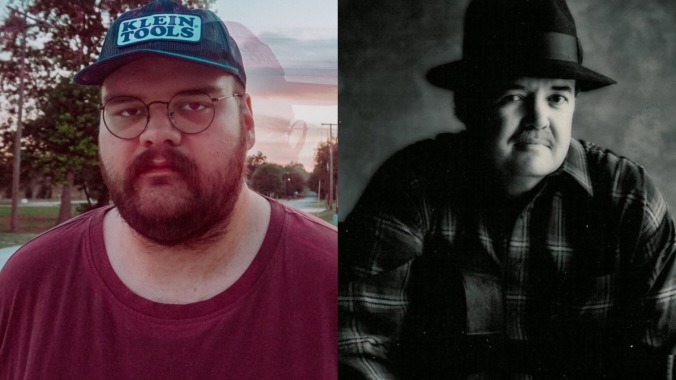The Curmudgeon | Oklahoma: Punching Above Its Weight

Every geographic area on the planet houses talented musicians, but some areas seem to produce more than their fair share. Ireland, for example, has only 7 million people (North and South), but the island has given us U2, Van Morrison, the Chieftains, the Fontaines D.C. and the Celtic music tradition. Or consider Jamaica, another island with a modest population (3 million) but with musicians such as Bob Marley, Toots Hibbert, Monty Alexander, Sean Paul and genres like reggae, ska, dub and dancehall.
Here in the U.S., certain states yield more great music than their populations would seem to warrant. Louisiana (4.5 million) has given us Louis Armstrong, Clifton Chenier, Mahalia Jackson, Fats Domino, Leadbelly, Wynton Marsalis, Jerry Lee Lewis and genres such as jazz, Cajun, zydeco and second-line. Mississippi (3 million) has provided Elvis Presley, Robert Johnson, Jimmie Rodgers, Lester Young and genres such as Delta blues, rockabilly and Hill Country blues.
Those four locations have well-deserved reputations as musical hot spots, but I want to talk about a place that’s often overlooked: Oklahoma (4 million). This landlocked state has produced Woody Guthrie, J.J. Cale, Garth Brooks, Lowell Fulson, Charlie Christian, Gene Autry, Roger Miller, the Flaming Lips, the Gap Band, Reba McEntire and Leon Russell.
The state has also been an incubator for musical movements beyond its border. Guthrie defined the singer-songwriter folk music that such proteges as New York’s Pete Seeger and Minnesota’s Bob Dylan carried forward. Brooks defined the country-music “hat-act” movement that changed Nashville forever. Cale provided the template for the careers of England’s Mark Knopfler and Eric Clapton. Merle Haggard was born in California, but his Oklahoma parents imbued him with enough of that heartland culture that Haggard could convincingly claim himself to be an “Okie from Muskogee.”
Texan Bob Wills, the greatest of Western Swing bandleaders, enjoyed his best years leading the house band at Tulsa’s Cain’s Ballroom. New Jerseyite Count Basie, the second greatest of the East Coast swing bandleaders, got his start in the Oklahoma City Blue Devils. Kansas City’s Charlie Parker, who invented bebop jazz, first made his name in Oklahoman Jay McShann’s band. But it’s not just outsiders who are benefiting from Oklahoma’s musical history. The state’s native sons and daughters have done superb work in those traditions, even if the state’s flyover status keeps the word from getting out.
No artist better personifies that paradox of great achievement and small recognition than one of Guthrie’s finest disciples: James Talley. Though the Oklahoma native spent much of his life in New Mexico, Washington State and Tennessee, his parents were Okies and his passion and skill for translating the lives of working-class folks into story songs—both witty and sobering—were frankly modeled on Okema, Oklahoma’s prodigal son Woody.
Now, the University of Oklahoma Press has published Talley’s memoir, Nashville City Blues, the archetypal story of a singer-songwriter who wowed music insiders—producers, artists and critics—but never found an audience large enough to sustain a career. The buzz was so great that he was invited to perform for Jimmy Carter at the White House. Between 1975 and 1977, he released four terrific albums for Capitol Records, full of songs that were eventually covered by Johnny Cash, Alan Jackson, Moby, Gene Clark, Johnny Paycheck and Hazel Dickens. But he wound up selling real estate to pay the bills.
Talley is a better lyricist than prose stylist, but he tells his story clearly and compellingly enough. He explains how his original ambition to be a painter was diverted to songwriting when he realized how his favorite records framed images in his mind. He found all the pictures he needed in the poor working people he met in early jobs in the New Mexico welfare department and the Nashville rat control program. He realized that his faith in social justice was better served by stories than slogans and by western-swing music than strident anthems.
-

-

-

-

-

-

-

-

-

-

-

-

-

-

-

-

-

-

-

-

-

-

-

-

-

-

-

-

-

-

-

-

-

-

-

-

-

-

-

-








































